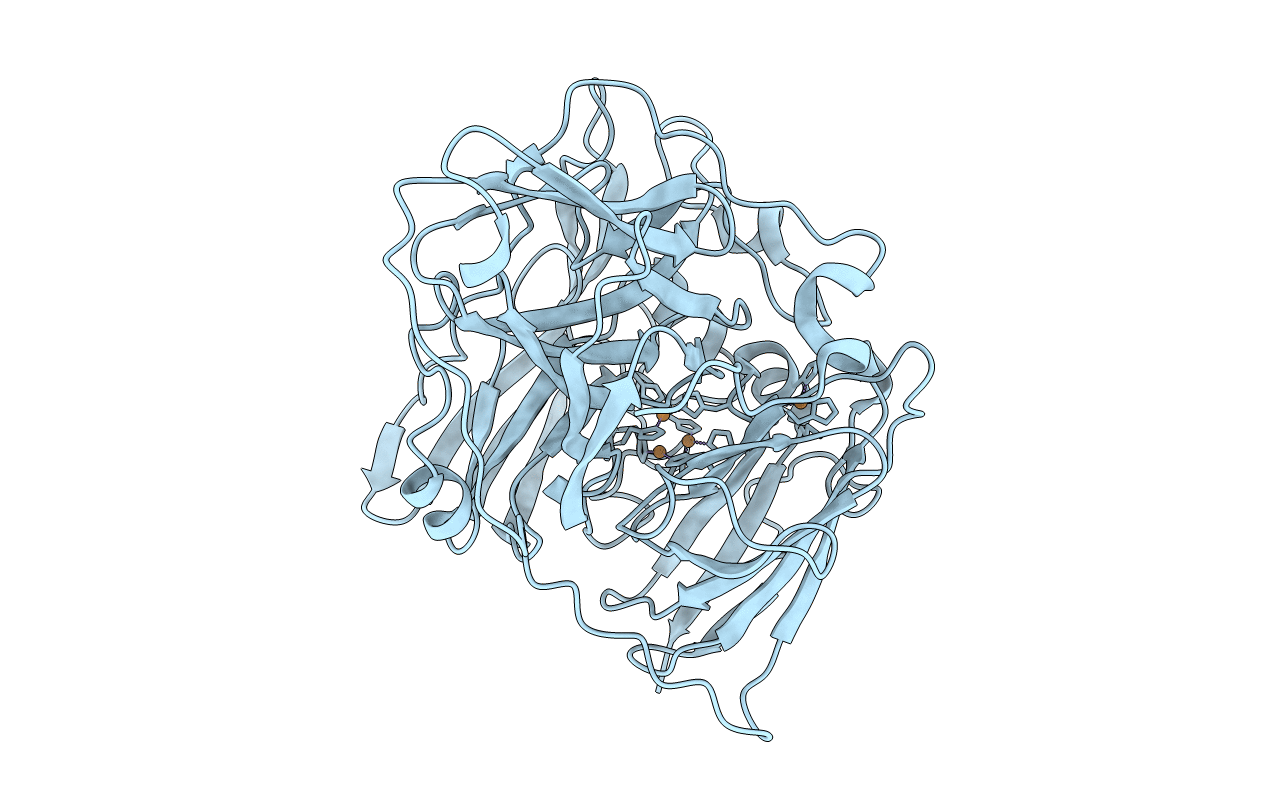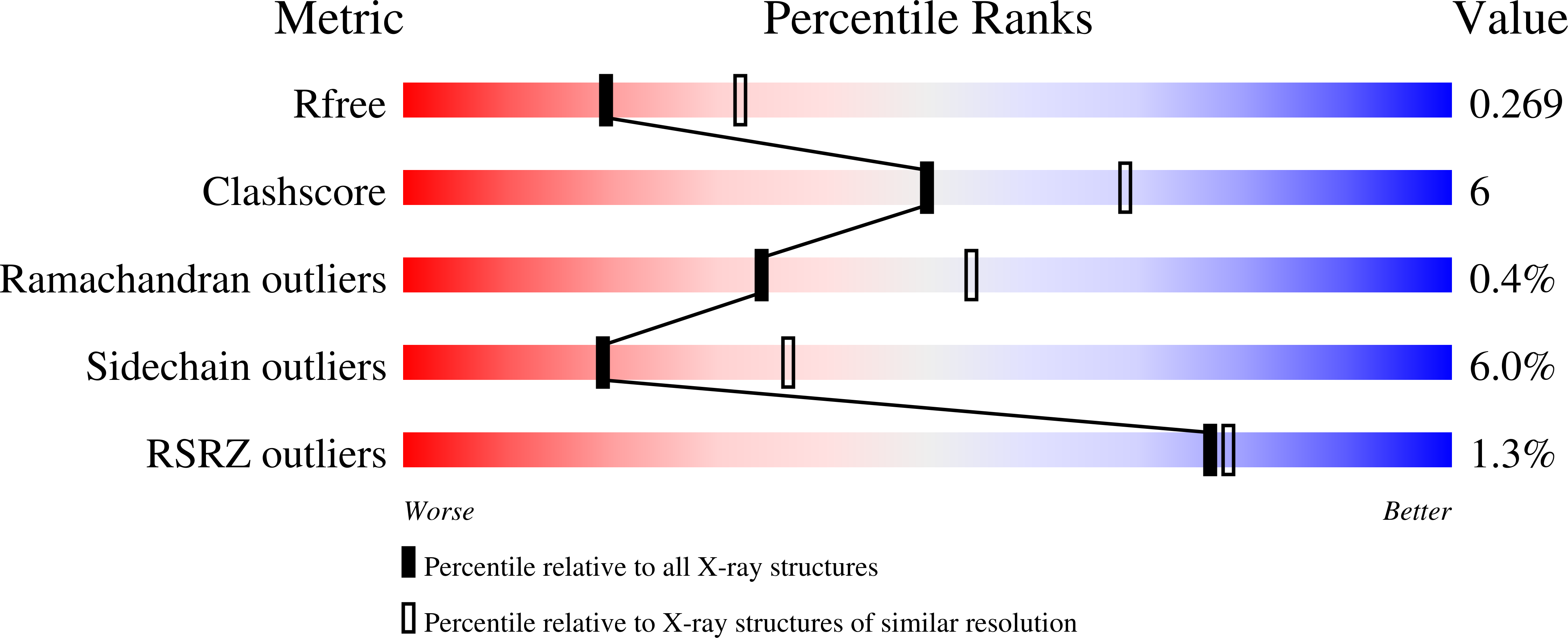
Deposition Date
2020-05-09
Release Date
2021-03-10
Last Version Date
2024-01-24
Entry Detail
PDB ID:
6Z0J
Keywords:
Title:
Crystal structure of laccase from Pediococcus acidilactici Pa5930 (Tris-HCl pH 8.5)
Biological Source:
Source Organism:
Pediococcus acidilactici 7_4 (Taxon ID: 563194)
Host Organism:
Method Details:
Experimental Method:
Resolution:
2.50 Å
R-Value Free:
0.26
R-Value Work:
0.22
R-Value Observed:
0.22
Space Group:
P 21 21 21


